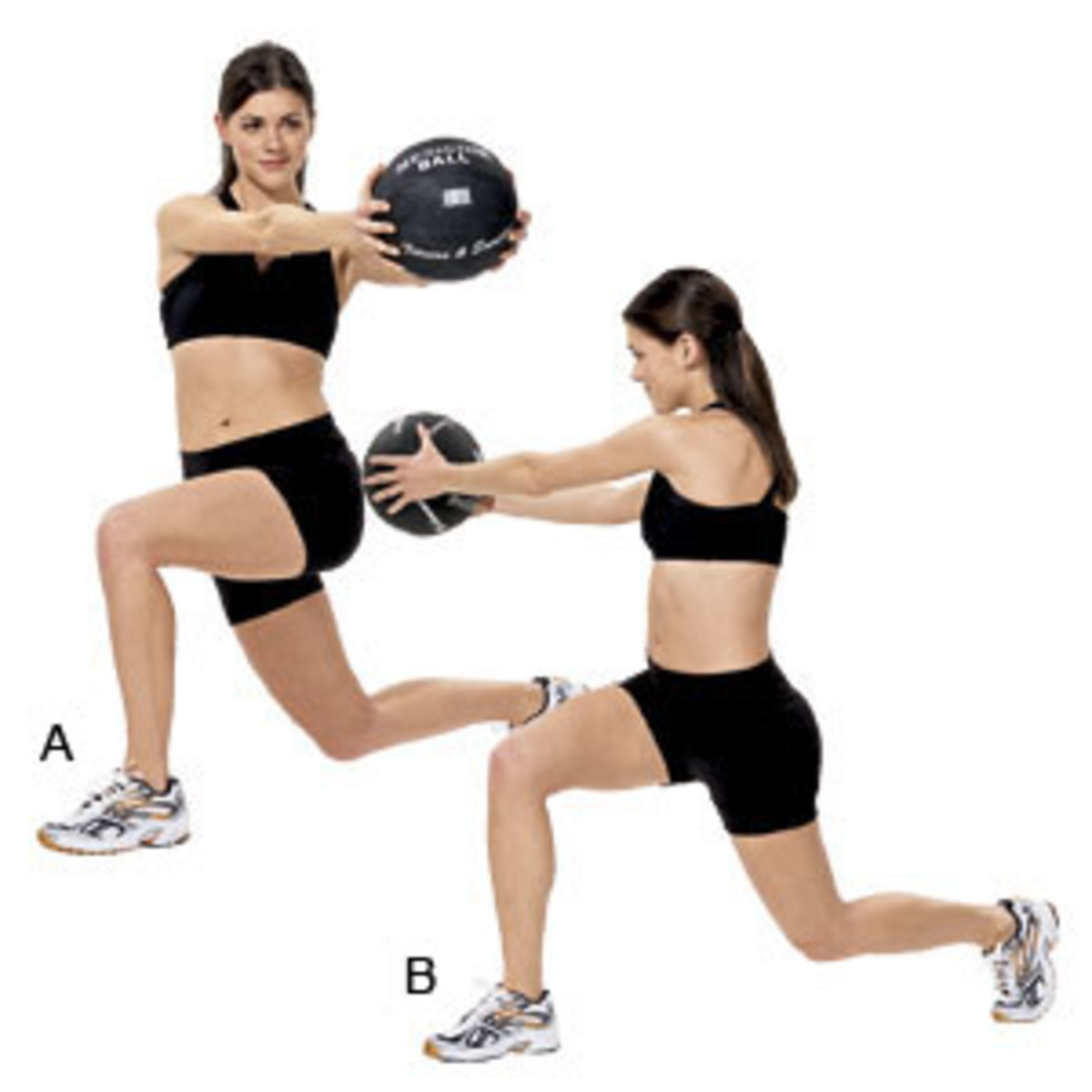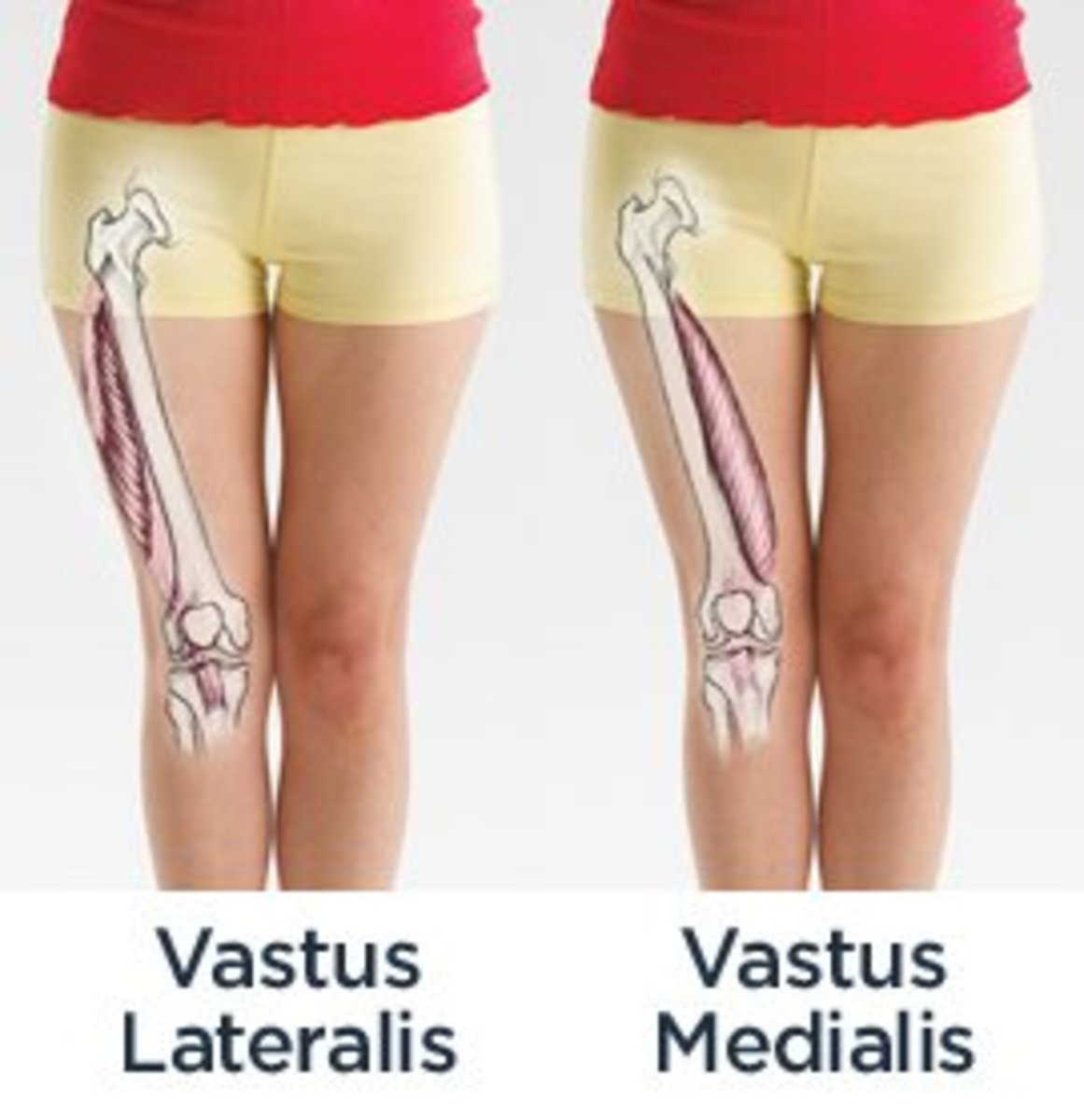Benefits of Training in Multiple Reps in Body Sculpting
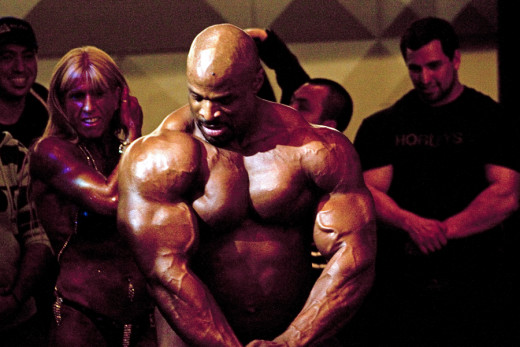
I remember the first time I read a bodybuilding magazine, I knew absolutely nothing about the importance of reps. I read the workout regimen of an IFBB pro and the reasons he gave for his favorite workout program. I was thoroughly impressed at the time, especially where he said that when he would try to get big, he would lift heavy and couple that with low reps, and when time came for him to be lean, especially before shows, he would lift light and do high reps. I thought this was the thing, since he was huge and lean, and to boot that-a world champ!
As I graduated into the amazing world of muscles, I would hear the same thing being repeated often-that low reps were for mass and high reps for fine cuts. It was so absolutely wrong! The truth, as I discovered later, was entirely different. Here is what I found. But before that, let's look at how reps play a role in recruiting various muscle fibers of the body, especially for beginners who have just embarked on this awesome path of sculpting a great body for themselves.

Low Reps
These are usually reps in the one to five range. It is generally believed that fast twitch muscles are stimulated by low reps while slow twitch muscles are stimulated by high reps. That is absolute trash. In fact, low reps stimulate virtually all muscle fibers!
The fibers of the body are called into action on demand, as-needed basis. That ranges from slow, intermediate, to fast. When a muscle is loaded with weights, the slow twitch fibers are recruited initially. If these fibers lack the gusto to lift the weight, the body recalls the next set - the intermediate fibers. Finally, when both fiber groups lack power for that weight, the fast twitch fibers are called into action. Recruitment of fibers is never halfway, meaning when lifting heavy loads both slow and intermediate fibers are stimulated completely and to their fullest extent.
Low reps are important to stimulate myofibrillar hypertrophy. This process involves increase in myosin and actin filaments in muscle tissues, both in size and number. Contractile tissue within the muscle mass increases with hypertrophy resulting in increased strength. This is relevant since overloading progressively is the primary necessity for growth in the longer run. Heavy weight in low reps is thus vitally important for max growth of your body muscles.

Moderate Reps
These reps range between 6-12. Moderate reps are vitally important to ensure the greatest muscle growth. This is because it combines the benefits of both low and high rep training by increasing muscle tension time through relatively heavier loads. These loads stimulate myofibrillar protein synthesis which in turn increases contractile proteins. When muscles are tensed for an increased duration, sarcoplasmic hypertrophy is stimulated, which is basically an increase in sarcoplasm and other proteins that are non-contractile and contained within muscle cells. This induction is simulated with high reps and light weights. This growth does not facilitate strength gain, but instead builds muscles much more than stamina and power.
In a nutshell then, heavy weights in low reps stimulate myofibrillar hypertrophy while light weights in high reps stimulate sarcoplasmic hypertrophy. Moderate rep ranges thus give a fine balance between stimulating both types of hypertrophies.
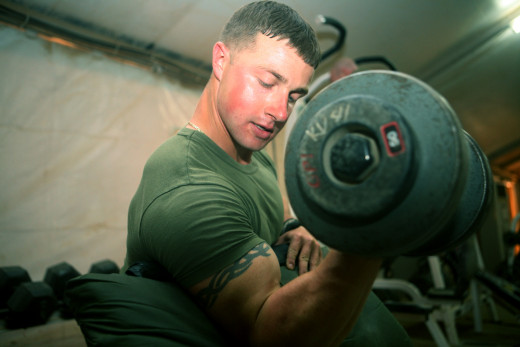
High Reps
High reps are sets where reps are 15 or more. The importance of high reps is in the context of glycogen and its effects on protein synthesis. Glycogen is carbohydrate that is stored within muscle tissues. It contains water, which increases protein synthesis and facilitates in building larger muscle size. The synthesis of proteins leads to hydration of muscle cells, which in turn triggers a system where muscles tend to grow larger to protect themselves.
High reps deplete glycogen storage drastically. This leads the body to react and store more glycogen within the muscles. When high reps are continued steadfastly over a period of time, the cells get stretched, release anabolic hormones, and results in overall greater muscle size and growth. High reps also disallow blood from leaving the area that is focussed upon during the training schedule. This in turn induces speedier muscle growth.
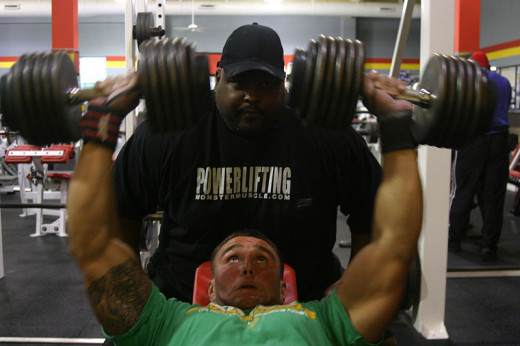
Benefits of Training in Multiple Rep Ranges
Utilizing a variety of loads and reps is going to have an overall synergistic effect in bodybuilding. Rep ranges are interdependent on each other. If there is improvement in one field, it will lead to consequential improvement in another field. All ranges of reps stimulate muscle growth, though the paths taken for achieving that differ from each other. To get the maximum benefit, all rep ranges need to be utilized irrespective of cutting or gaining. High reps do not necessarily stimulate fat loss. Weight training itself will speed up body metabolism and will be the cause of burning of calories. Cardio and diet are the essential tools for shedding body fat and getting lean. So let weights build muscles and diet cut your body fat!

Basic Weight Training for Beginners
If you are focusing on training a specific muscle group no more than once per week, here is a combo of rep ranges that will be ideal to build your muscles:
• First Set of Exercises - Three to four sets of heavier loads between one to five reps coupled with movements that are compound in nature.
• Next Set of Exercises - Three to four sets of loads in the moderate category with 8-12 reps range with movements that are mostly compound.
• Last Set of Exercises - Three to four sets with loads that are light with 15-30 reps with movements that are in isolation nature.
When you are training muscle groups twice a week, it is going to allow you to focus and specialize on one training type at one time.
In the first session, start doing the following reps:
• First Set of Exercises - Three to four sets of heavier loads with movements that are compound between two to four reps.
• Next Set of Exercises - Three to four sets of moderate loads with movements that are mostly compound between four to six reps.
• Last Set of Exercises - Tree to four sets of light loads with movements in isolation between six to eight reps.
In the next session, the following are the recommended reps:
• First Set of Exercises - Three to four sets of heavier loads with movements that are compound between 12 to15 reps.
• Next Set of Exercises - Three to four sets of moderate loads with movements that are mostly of compound nature between 15 to 20 reps.
• Last Set of Exercises - Three to four sets of light loads with movements in isolation between 25 to 30 reps.
Of course it goes without saying that schemes of progression and rep ranges need to consider the lifts that are going to be performed.
If you think you are going to get away with just doing chest machines, leg presses, and down pulls for your back, start thinking again! Some bodybuilders claim to get better muscle-mind connect and more efficient recruitment of fibers through machines. That's absolutely true for champs, not for freshers like you! If you are aiming for muscle slabs and a superb body, you just need to take the longer route. You simply got to go through the sets of basic big lifts that are going to tax both your mind and body and place unforeseen demands on you to grow bigger. These lifts are deadlifts, squats, bench presses and overhead presses. But these are only some! Here is a look at some programs tailored by experts in the world of bodybuilding.
Sucker Punch-Behind The Scenes-Training The Cast
DTP or the Dramatic Transformation Principle
The objective of this program is to build lean muscle mass and strength and burn fat. It is a four-week program, and has been fashioned by Kris Gethin, founder of DTP, celebrity personal trainer, author of book Body By Design, and editor of bodybuilding.com.
This program suggests muscle training in opposing tandems of supersets. It comprises four days of weight training and three days of cardio exercises. The first day is focused towards the legs and upper abs. The second day is focused on cardio and obliques with side twists. The third day is on back and chest, fourth again on cardio and obliques, fifth day on arms both biceps and triceps, and the lower abs. The sixth day is focused on cardio and obliques, and the last day of the week is aimed towards upper traps and belts. This weekly routine needs to be repeated for four weeks to get the maximum benefit.
The program starts with high reps, and then goes down progressively by 10 reps each while increasing weights.
Y3T or The Yoda 3 Training
This program has been set by Neil Hill, founder of Y3T, coach to Mr. Olympia 2012 and IFBB pro Branch Warren. Yoda is Neil's nickname so the program has been named after him.
This is a nine-week program which can be extended over a longer period. It is separated in three-week cycles. The objectives are similar - burn fat, build great muscle mass and strength. The greater the muscle mass means lesser fat through calorific burning, and most bodybuilding programs rely on this sole factor.
It essentially consists of weight training four days of a week and then resting for the next three days. The program is separated by three-week cycles. The first week consists of training heavy with 6-10 reps and longer rest periods. The weight is decreased in the next week and the reps increased to 10 to 16 with shorter rest periods. In the third week the reps go really high with 20 to 25 for smaller muscles and as high as 100 for the larger ones. The rest period goes down further to 35-40 seconds between each set.
Both the DTP and Y3T rely on the principle that hypertrophy of muscles occur depending on the time muscles spend under tension. Through changing the variables of time and tension, the muscles are forced to develop and grow. Time is represented by reps and tension with resistance caused by weights. With the Y3T program, a three-week pattern is followed where muscle tension descends from higher to lower weights, consequently resistance, at the same time increasing reps as the descent starts.
DTP on the other hand focuses on each part of the body through light and heavy resistance with high and low reps in the same workout regimen. DTP is more demanding than Y3T, hence it is a four-week program while the Y3T is spread over nine weeks with the option to continue it longer.

So What Are You Waiting For? Go Ahead and Start Sculpting Your Body Today
There is a vast array of other bodybuilding programs like the Mile O'Hearn's 12-week power program, alternating core lifts and cardio, and Jamie Eason's LiveFit Trainer, but essentially all programs are geared towards utilizing muscle fibers judiciously with corresponding stimulation of muscle groups through reps.
The benefits of training in multiple rep ranges are immense as noted above, especially for beginners into body sculpting where muscles can be trained with the correct exercise regimen to get that lean and muscular look.
The first few visits to a gym are really not a great experiences, but don't get discouraged. You may tend to loiter around trying out various machines in the gym. You might probably stand in front of the mirror looking at yourself while lifting weights that are much too heavy for you. You will gawk at other seasoned bodybuilders in the gym and try to mimic them. Until you are aware of the intricacies of perfect training, you are hardly going to make any progress towards meeting your goal.
Always remember that you are not going to be Arnold Schwarzenegger or Ronnie Coleman overnight. You need to take baby steps each time to get on your path to success. Start with the basics and try and develop a routine. The basics will include chin-ups, pull-ups, push-ups, hyperextensions, and dips. Try and work with your own bodyweight before graduating into advanced regimens that have been mentioned above. Start with the lighter routine mentioned initially with stepwise reps, then graduate to programs like the Y3T, and finally get into more intense programs like DTP.
Always remember though about the benefits of training in multiple rep ranges. It far outweighs individualized reps focused on particular muscle fiber groups to either build strength or bulk.
So don’t wait! Pack your kit and get out there, go for those alternating brutal heavy and delicate lifts, tear your skin with those pumps, and then burn out the fat with reps that are high and low within the same regimen. Like they say at Nike, Just do it! You are good to have a body like Ronnie Coleman or Arnold Schwarzenegger in a short while, and who knows you might just be the next world champ a couple of years up the road!


